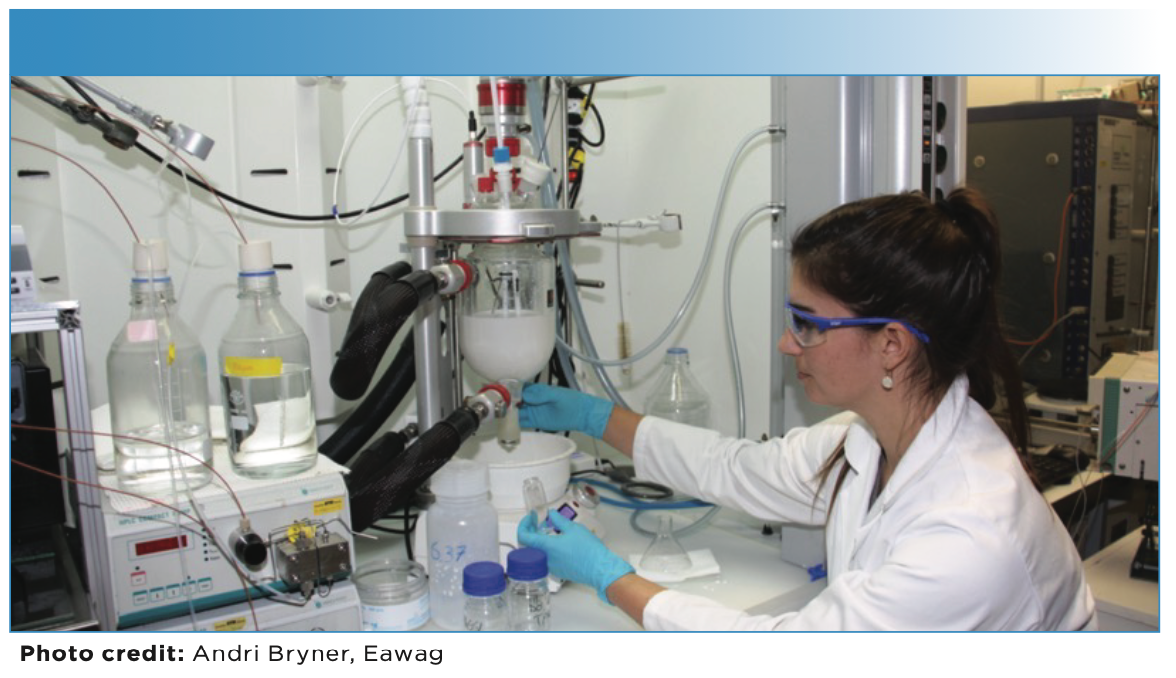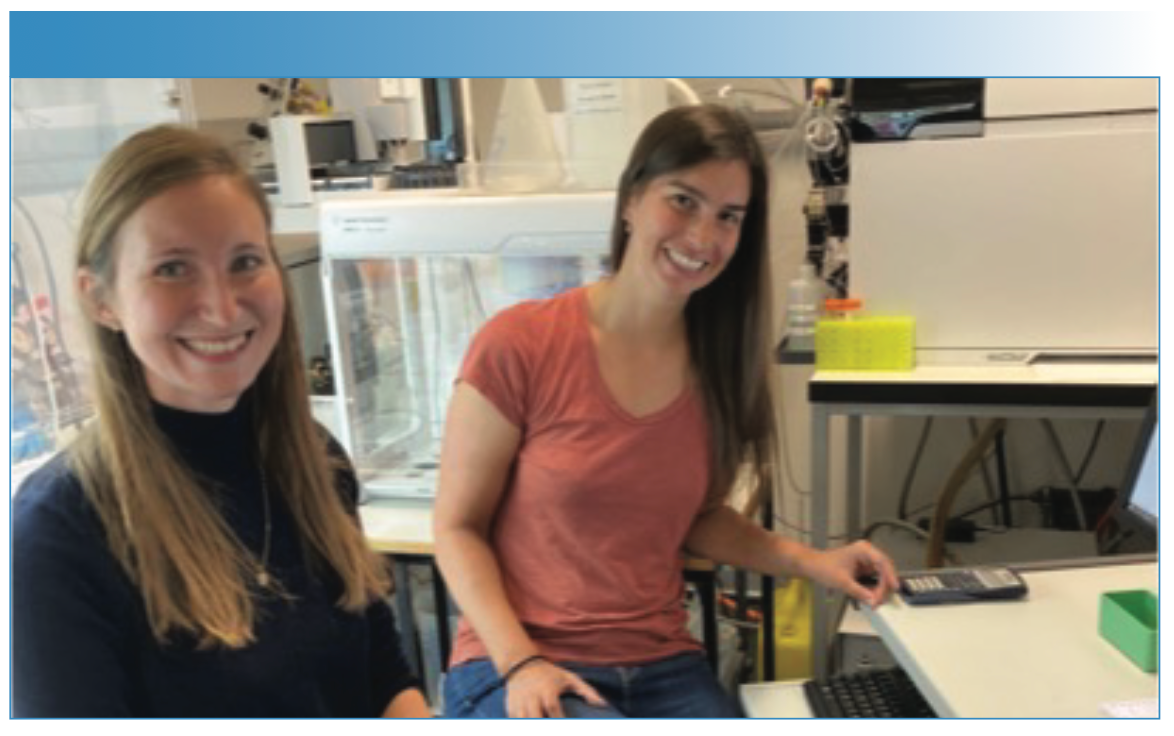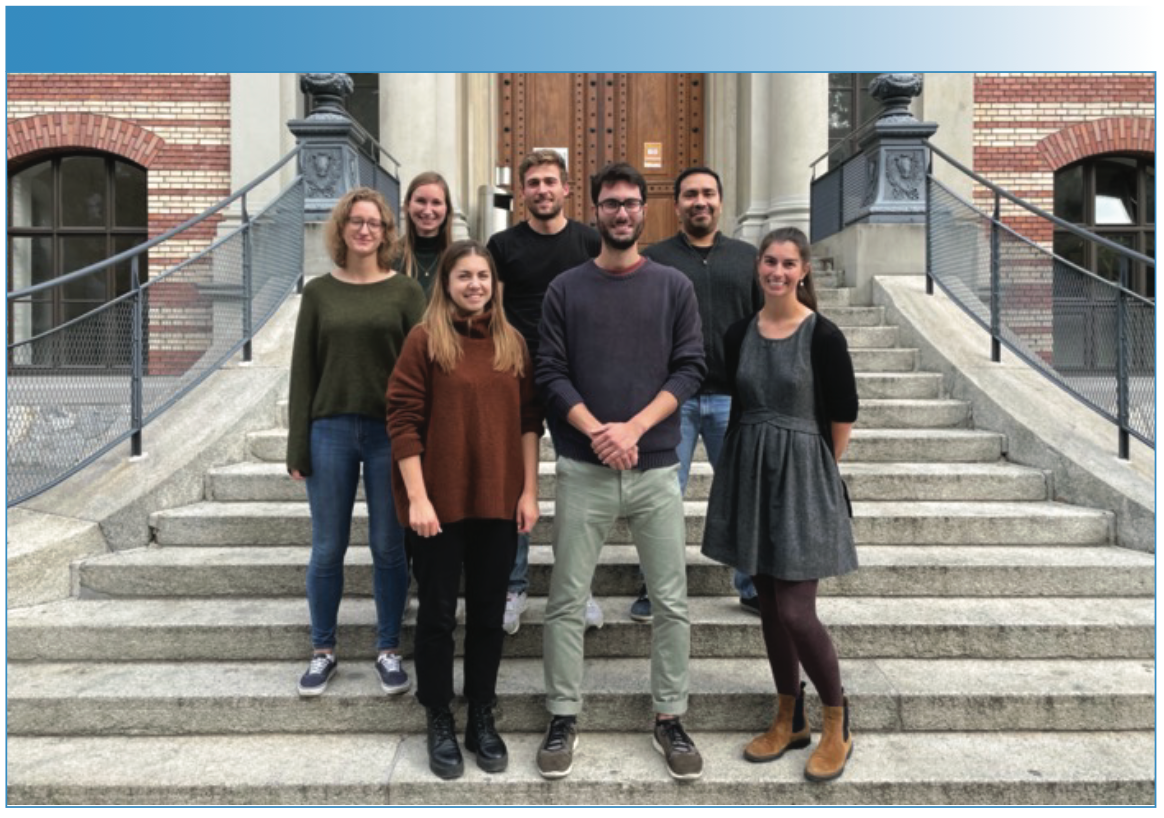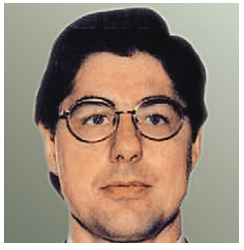The 2022 Emerging Leader in Atomic Spectroscopy Award
This year’s atomic spectroscopy award recipient is Denise M. Mitrano, whose research is focused on the application of atomic spectroscopy techniques—inductively coupled plasma–mass spectrometry (ICP-MS) and single-particle ICP-MS (spICP-MS)—to elucidate the transport and impact of engineered nanomaterials and nano- and microplastics under environmental and synthetic conditions.
Denise M. Mitrano is Assistant Professor of Environmental Chemistry of Anthropogenic Materials at ETH Zurich, in the Department of Environmental Systems Science. Her research is directed to understanding the impact and interaction of nanoparticles in the environment using atomic spectroscopy techniques, such as inductively coupled plasma–mass spectrometry (ICP-MS) and single-particle ICP-MS (spICP-MS). She is the winner of the 2022 Emerging Leader in Atomic Spectroscopy Award, which will be presented to her at the 2022 Winter Conference on Plasma Spectrochemistry, which will be held in Tucson, Arizona, from January 17 to 22, 2022.
Denise M. Mitrano, Assistant Professor of Environmental Chemistry of Anthropogenic Materials, ETH Zurich.

The Spectroscopy Emerging Leader in Atomic Spectroscopy Award recognizes the achievements and aspirations of a talented young atomic spectroscopist who has made strides early in his or her career toward the advancement of atomic spectroscopy techniques and applications. The winner must be within 10 years of receiving his or her highest academic degree in the year the award is granted, and the winner is chosen by an independent committee.
Mitrano earned her BS degree (cum laude) in chemistry from Salve Regina University in Newport, Rhode Island, in 2008, and received her PhD in 2012 in geochemistry from the Colorado School of Mines, with advisement from Professor James F. Ranville. Her thesis title was, “Development of ICP-MS Based Nanometrology Techniques for Characterization of Nanoparticles in Environmental Systems.” Following postdoctoral research at Empa, the Swiss Federal Laboratories for Materials Science and Technology, in St. Gallen, Switzerland (mentored by Professor Bernd Nowack), she then became a Group Leader of the Process Engineering Department (as a Swiss National Science Foundation (SNSF) Ambizione Fellow) at Eawag, the Swiss Federal Institute of Aquatic Science and Technology in Dübendorf, Switzerland. In July 2020, Mitrano accepted her current position as an Assistant Professor at ETH Zurich. Her previous awards include the Marie Heim-Vögtlin prize for the outstanding woman researcher of the year in Switzerland (2021), several SNSF Fellowships (2017–2025), and a host of scholarships, grants, and fellowships from multiple organizations.
Mitrano at the drinking water treatment plant in Zurich, Switzerland, where she assessed nanoplastics removal from a drinking water treatment chain.

With an h-index of 25, and an i10 index of 30, and over 2977 citations in Google Scholar, Mitrano has published research in such journals as Nature Nanotechnology, Nature Communications, Water Research, Environmental Science & Technology, ACS Nano, Environmental Science: Nano, Environmental Toxicology and Chemistry, Environment International, Journal of Analytical Atomic Spectrometry, Journal of Chromatography A, Talanta, Environmental Chemistry, Waste Management, Nanotechnology, NanoImpact, Frontiers in Environmental Science, and Spectroscopy.
Mitrano’s research explores the processes and impacts of nanoparticle transmission and retention in environmental and biological systems. Her research involves sampling and measurement strategies, environmental and ecotoxicity testing, nanoparticle tracking, microplastic impact studies, process analysis and continuous monitoring, environmental modeling, pollution studies, policy to promote environmental health, and more.
Mitrano in the laboratory synthesizing nanoplastics. Photo credit: Andri Bryner, Eawag.

Summary of Research Work
Mitrano uses several key word phrases to describe her research work. These include environmental analytical chemistry, water quality, plastic pollution, nanotechnology, nanometrology, metals analysis, analytical method development, and life cycle thinking. As a PhD student at the Colorado School of Mines, Mitrano worked with Professor Ranville to build her understanding of nanomaterial and metal particle characterization and the analytical techniques required for quantitative detection and characterization of these materials in both environmental and biological samples. The primary analytical techniques used for nanoparticle measurements included ICP-MS, spICP-MS, and asymmetrical flow field flow fractionation (AF4)-ICP-MS. Her graduate research focused on determining the effects of various water chemistries on silver (Ag) nanoparticle behavior in laboratory, natural, and processed waters using ICP-MS.
As a postdoctoral researcher at Empa from 2013 to 2016, Mitrano’s work consisted of planning and executing laboratory experiments to detect and characterize nanomaterials in various nanomaterial-based products to estimate environmental effects and risk assessment. She investigated the fate and transport of nanoparticles from these products into aqueous systems under a variety of conditions. Mitrano then moved to Eawag in 2017 to lead a research team devoted to studying plastic use and its effects on the environment. Her mission was to research the fate and transport of particulate plastic in environmental systems and report her team’s findings in top-tier scientific journals and conferences. Since 2020, in her current role at ETH Zurich, Mitrano is continuing her environmental research studies specifically related to the environmental chemistry of anthropogenic materials.
Alissa Tophinke and Denise Mitrano in the laboratory working at an ICP-MS instrument.

The Environmental Chemistry of Anthropogenic Materials (ECAM) group at ETH Zurich. Front row, left to right: Fabienne Marie, Francesco Parrella, Denise Mitrano. Back row, left to right: Silja Boner, Alissa Tophinke, Roman Schefer, Jonathan Nunez.

Most Impactful Work to Date
In assessing Mitrano’s impact on environmental science, it is useful to look at both her mostly highly cited papers as well as those considered most important by her mentors and peers.
Bernd Nowack is a Group leader at Empa, the Swiss Federal Laboratories for Materials Science and Technology, and has been familiar with Mitrano’s work for over a decade. He noted that Mitrano’s first significant contribution was her PhD work that laid the foundations for the application of spICP-MS for the analysis of engineered nanomaterials in natural samples. Nowack noted that the second major contribution of her work was a method to synthesize metal-doped nano- and microplastics—allowing the use of atomic spectroscopy to analyze the metals embedded inside particles with high sensitivity. This development provides a method for mechanistic studies about nano- and microplastic fate in natural systems at low, environmentally relevant concentrations. Nowack considers Mitrano’s most influential papers to be those published in Environmental Toxicology and Chemistry and Nature Nanotechnology. “These papers have attracted a lot of interest from people worldwide and resulted in numerous collaborations and common papers,” Nowack said, noting that more work continues using doped plastics to study the fate of micro- and nanoplastics in natural and engineered systems.
James Ranville, a professor at the Colorado School of Mines, was Mitrano’s PhD advisor. Ranville said that Mitrano’s most important contribution so far has been applying the use of ICP-MS to examining the environmental fate of metal-doped microplastics, after initially developing it for tracking dissolution of silver nanoparticles in natural and processed waters during her PhD. Using ICP-MS has been invaluable for investigating nanoplastic and microplastic fate and behavior in quite complex environmental systems. Ranville said that Mitrano’s proof-of-principle studies have demonstrated that atomic spectroscopy is useful for understanding the transport, biological uptake, and fate of nanoplastics in laboratory systems, wastewater systems, living systems, and complex external environments.
Detlef Günther is a professor of Trace Element and Micro Analysis at ETH Zurich. He has been familiar with Mitrano’s work for more than 12 years, since he first saw her give a clear and convincing presentation at the Winter Conference on Plasma Spectrochemistry about her work in nanomaterials when she was in Ranville’s research group. “There are many aspects in her work which have been interesting for the community,” Günther said, noting that she has focused on the detection and quantification of a wide variety of nanomaterials—from textiles to wastewater, and that her studies have included inorganic materials, and plastics, and that and she tried a wide variety of methods to validate her studies. “I think her latest studies on microplastic release from textile manufacturers in China will have an impact on the monitoring of sources of anthropogenic nano materials in many regions,” he said.
Collaborative Research Work
Nowack was cognizant of Mitrano’s work almost from its beginning, “I was aware of the pioneering work of Denise in developing spICP-MS from the literature,” he said. “I was a partner in an EU-project that just got funded and I was looking for a postdoc to work with me on aging of nanomaterials,” he says, “I was happy that Denise liked the outdoors, so I was able to convince her that after a PhD in Golden, Colorado, Switzerland would be the right place for a postdoc.” In spring 2013 Mitrano went to St. Gallen in Switzerland to work on the NanoMILE project, a 28-partner project, dedicated to developing a detailed mechanistic understanding of the interactions of manufactured nanomaterials in living systems and the environment.
Most Recent Research Publications
The most recent key papers by Mitrano, published since 2021, describe the analysis and characterization of anthropogenic particles in the environment. Such particles include microplastic fibers (MPFs), nanoplastic particles, microplastics (MPs), and engineered nanoparticles (ENPs). Mitrano applies various techniques for particle analysis, including ICP-MS operated in a spICP-MS, for quantitative measurements.
Mitrano and colleagues have published a paper describing that fiber fragments are a dominant form of microplastics found in environmental samples (1). This finding suggests that synthetic textiles are a potential predominant source of microplastics in the environment. The study was intended to investigate the influence of abrasion of synthetic textile fibers on the formation and release of microplastic fibers and fibrils during washing. To conduct this study, fleece and interlock textile swatches composed of polyester were abraded and tested using a Martindale tester. The microplastic materials formed during the abrasion test were characterized in terms of number of particles, as well as particle length and diameter.
A recent book has been published, edited by Mitrano, Praetorius, Lespes, and Slaveykova, entitled Biogeochemistry of Anthropogenic Particles (2). The book is a collection of articles on the biogeochemical cycle of human-produced particles in the environment, emphasizing the distribution of nano- and micro-scale sizes. The book addresses the sources, occurrence, transformations, and transport of particles in the environment and in living organisms. Four levels are used to group the topics covered, including analytical methods for particle measurement and characterization.
Mitrano, Wick, and Nowack recently published research that situates nanoplastics in the context of global plastic pollution (3). Nanoplastics result from the weathering of macroplastics leading to the presence of nanoplastic particles across global ecosystems. The paper discusses nanoplastic sources and risks, and assesses common issues of formation and proliferation of nanoplastics and other nano-sized objects, such as engineered nanomaterials and natural colloids, in the environment.
MPFs from textile fiber effluent, breakage, and degradation are found in the environment as an indicator of human impact. A paper by Mitrano and coworkers describes the release pathways of textile-related MPFs from textile mill processing industrial wastewater (4). MPF release was estimated from the industrial wastewater for a typical Chinese textile wet-processing mill. Effluent was sampled and MPF fiber number and length were measured using stereomicroscopy. An average of 361.6 ± 24.5 MPFs/L was identified in the mill effluent. It was noted that 92 % of all effluent fibers were shorter than 1000 μm. It was determined that an effluent sampling volume of 5 L was optimum for fiber count reproducibility, standard deviation, and ease of handling. Mitrano and her coauthors concluded that the production stage of textiles can add significantly to overall MPF pollution, and the ability to target and treat industrial effluents may significantly reduce global MPF pollution.
Mitrano and other researchers describe the use of trace metal-doping of nanoplastics and microplastics as an approach to detecting NPs in the environment (5). In one example of how this approach can be used, a fresh- water amphipod, Gammarus pulex, was exposed to palladium (Pd)-doped NPs via natural sediment at six spiking concentrations with the strategy of assessing uptake and chronic effects. The NP concentrations in the amphipods were measured by ICP-MS based on Pd concentrations on digests of the exposed organisms and fecal pellets excreted during a post-exposure 24-h depuration period. A significant positive linear relationship was observed between concentration of NP in the sediments and NP uptake by the G. pulex organisms; although no statistically significant effects were obverted in the survival or growth rate of the organisms. This research demonstrated that nanoplastics exposure and accumulation in organisms can be precisely determined using metal-doped nanoplastics, which is useful for studies assessing the risks of nanoplastics.
Key Career Publications: Most Cited
Mitrano’s most highly cited papers involve analysis of silver nanoparticles (AgNPs) using spICP-MS, exploration of the life cycle of nano-enhanced products in the environment, microplastic formation and impact from household washing, and the use of a variety of nanometrology techniques to analyze nanoparticle transformations and to measure the release of nanoparticles from textiles containing silver or nanosilver.
AgNPs can be detected using spICP-MS as demonstrated by Mitrano and colleagues in a paper having 327 citations in Google Scholar (6). The authors describe the use of spICP-MS, for quantitative measurements of AgNPs. The spICP-MS method sample preparation involves serial dilution, filtration, and acidification. It was concluded that a commonly available laboratory spICP-MS method is capable of quantifying ng/L Ag concentrations in environmental samples. This analytical method provides tool for monitoring Ag and other metal nanoparticles for fate, transport, stability, and toxicity studies.
Mitrano, along with three coworkers, has written a review with nearly 300 citations, that describes the life cycle of the impact of nano-enhanced products that contain ENPs (7). A holistic view of the impact and potential risks of nanoparticles examines ENPs from their production, through their use cycle, and final disposal. The review explores the issues related to the aging and transformation processes affecting ENPs in the environment. Biogeochemical processes affecting ENPs include photochemical transformations, oxidation and reduction, dissolution, precipitation, adsorption and desorption, combustion, abrasion and biotransformation. A thorough evaluation of the impact of ENPs requires a holistic approach to gathering knowledge on the complete life cycle of nanoproducts.
A paper with 271 citations (G.S.), coauthored by Mitrano, describes the application of spICP-MS and AF4-ICP-MS for characterizing silver ENPs in the environment (8). Both spICP-MS and AF4-ICP-MS were evaluated for detecting ENPs and compared to microscopy, light scattering, and filtration methods, along with their ability to measure monodisperse silver ENPs for size and concentration detection limits, resolution, and multi-form elemental analysis. It was demonstrated that spICP-MS is the most sensitive method, whereas AF4-ICP-MS can detect much smaller particles (2 nm vs. 20 nm for spICP-MS).
Mitrano, Hernandez, and Nowack developed a method for evaluating the release of microplastics during the household washing of polyester-based textiles (9). This paper, with 235 citations, tested their hypothesis that synthetic textiles are a major source of microplastic fibers release in urban environments. This study measured the size and mass of microplastic fibers released from polyester textiles during simulated home washing under controlled laboratory conditions. This research sought to understand the physical properties of textiles that affect the mechanisms of microplastic fiber release from laundry wash water into the environment.
Transmission electron microscopy combined with energy-dispersive X-ray spectroscopy (TEM-EDX) was used to explore nanoparticle transformations and to measure the release of nanoparticles in wash water from silver and nanosilver containing textiles (10). A research paper by Mitrano and colleagues, with 222 citations, combined serial filtration with TEM-EDX for characterization of ionic silver, AgCl, and metallic Ag nanoparticles. The study concluded that textiles treated with “conventional” silver have equal or greater propensity to form nanosilver particles during washing conditions than those treated with nanosilver.
The Future
Given Mitrano’s accomplishments so far, it is clear that she has a bright future. “Denise clearly has the talent and drive to make substantial contributions to science and to mentor the next generation of young scientists,” Ranville said. “It has been my pleasure to watch her reputation grow.”
Günther agrees. “She is an open-minded person and shaped the nano-analytics field with her contributions,” he said. “I am sure we will see much more interesting manuscripts from her research group.”
References
(1) Y. Cai, D.M. Mitrano, R. Hufenus, and B. Nowack, Environ. Sci. Technol. 55(12), 8001–8009 (2021).
(2) D.M. Mitrano, A. Praetorius, G. Lespes, and V.I. Slaveykova, eds., Biogeochemistry of Anthropogenic Particles (Frontiers Media SA., 2021). https://books.google.com/books?hl=en&lr=&id=ch AvEAAAQBAJ&oi=fnd&pg=PP1&ots=KoKGXq9Plf&sig=kILs9mkanNGjhPj pWybbvIT2BSs#v=onepage&q&f=false
(3) D.M. Mitrano, P. Wick, and B. Nowack, Nat. Nanotechnol. 16(5), 491–500 (2021).
(4) C.K. Chan, C. Park, K.M. Chan, D.C. Mak, J.K. Fang, and D.M. Mitrano, Environ. Chem. 18(3), 93–100 (2021). Doi:10.1071/EN20143
(5) P.E. Redondo-Hasselerharm, G. Vink, D.M. Mitrano, and A.A. Koelmans, Environ. Sci. Nano 8, 1761–1770 (2021).
(6) D.M. Mitrano, E.K. Lesher, A. Bednar, J. Monserud, C.P. Higgins, and J.F. Ranville, Environ. Toxicol. Chem. 31(1), 115–121 (2012).
(7) D.M. Mitrano, S. Motellier, S. Clavaguera, and B. Nowack, Environ. Int. 77, 132–147 (2015).
(8) D.M. Mitrano, A. Barber, A. Bednar, P. Westerhoff, C.P. Higgins, and J.F. Ranville, J. Anal. At. Spectrom. 27(7), 1131–1142 (2012).
(9) E. Hernandez, B. Nowack, and D.M. Mitrano, Environ. Sci. Technol. 51(12), 7036–7046 (2017).
(10) D.M. Mitrano, E. Rimmele, A. Wichser, R. Erni, M. Height, and B. Nowack, ACS Nano 8(7), 7208–7219 (2014).
Jerome Workman, Jr. is the Senior Technical Editor for Spectroscopy. Direct correspondence about this article to jworkman@mjhlifesciences.com ●


Microplastics Widespread on Catalan Beaches, Study Finds
March 28th 2025In a recent study published in Marine Pollution Bulletin, a team of researchers from several Spain and Portugal universities and institutions (Rovira i Virgili University, Universitat de Barcelona, University of Porto, and Institut d'Investigació Sanitaria Pere Virgili (IISPV) assessed microplastic (MP) contamination along the Mediterranean coastline.